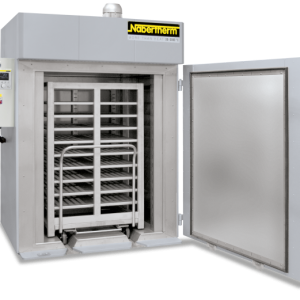Don't wanna be here? Send us removal request.
Text
Laboratory Oven: Types, Uses & How to Choose the Right One for Your Lab
A laboratory oven is a critical piece of equipment used in scientific, medical, pharmaceutical, and industrial laboratories for a wide range of thermal processing tasks. From sterilization and drying to baking and heat treatment, lab ovens offer precise temperature control and uniform heat distribution.
This article explains what a laboratory oven is, the different types available, common applications, and what to consider when choosing the right oven for your lab.
What Is a Laboratory Oven?

A Laboratory Oven is a temperature-controlled device used to heat and maintain a consistent temperature for samples, instruments, or materials. These ovens typically operate in a temperature range of ambient +5°C to 300°C or more, depending on the model.
Laboratory ovens are designed for:
Drying glassware or samples
Curing or baking materials
Dehydration or desiccation
Sterilization
Heat treatment of chemicals or metals
Common Types of Laboratory Ovens
1. Gravity Convection Ovens
Uses natural air circulation
Cost-effective and ideal for gentle drying
Lower airflow, longer heating times
2. Forced Air Convection Ovens
Uses a fan to distribute heat evenly
Faster temperature recovery and uniformity
Ideal for applications needing consistent heating
3. Vacuum Ovens
Operates under reduced pressure
Prevents oxidation or contamination
Suitable for delicate samples or heat-sensitive materials
4. Cleanroom Ovens
Designed for use in sterile environments
HEPA filtration systems to prevent contamination
Common in pharmaceutical and semiconductor labs
Applications of Laboratory Ovens

Laboratory ovens are used across various industries, including:
Biotechnology & Life Sciences: Drying biological samples and sterilizing labware
Pharmaceuticals: Curing and stability testing
Research & Academia: Controlled sample heating in experiments
Industrial Labs: Heat-treating components or materials
Electronics: Drying printed circuit boards (PCBs) or coatings
Key Features to Consider When Choosing a Laboratory Oven
✅ Temperature Range & Uniformity
Make sure the oven meets your process requirements and maintains consistent temperatures throughout the chamber.
✅ Chamber Size & Volume
Select a size based on your lab space and the size/number of items you’ll be heating.
✅ Airflow Type
Decide between gravity or forced air, depending on how fast and Vacuum Oven uniform heating you need.
✅ Safety Features
Look for over-temperature protection, alarms, and auto shut-off functions.
✅ Compliance & Certification
Ensure the oven complies with ISO, ASTM, or CE standards if required for regulated environments.
FAQs About Laboratory Ovens
1. What is the difference between a lab oven and a regular oven?
A laboratory oven offers precise temperature control, uniformity, and safety features designed for scientific applications—unlike household ovens that are less accurate and not suitable for research use.
2. How do I clean and maintain a laboratory oven?
Always unplug before cleaning
Use non-corrosive cleaners
Clean interior surfaces and fans regularly
Schedule professional calibration and maintenance annually
3. Can laboratory ovens be used for sterilization?
Yes, particularly forced-air and vacuum ovens. They can effectively sterilize glassware and instruments when operated at high temperatures for extended periods.
4. What temperature range is typical for a laboratory oven?
Most lab ovens range from ambient +5°C to 300°C, although some high-performance models can go up to 500°C or more.
5. Are vacuum ovens better for all samples?
Not necessarily. Vacuum ovens are ideal for heat-sensitive or oxidation-prone materials, but standard convection ovens are sufficient for general drying and sterilization.
Conclusion
A laboratory oven is an essential tool in any research, quality control, or industrial lab. Choosing the right model depends on your specific application, space, and temperature requirements. Whether you need simple drying or advanced heat treatment under vacuum, there’s a lab oven to match your needs.
For the best performance, always buy from a reputable supplier and ensure your oven is maintained and calibrated regularly. The right lab oven will improve efficiency, accuracy, and safety across all your thermal processing tasks.
1 note
·
View note